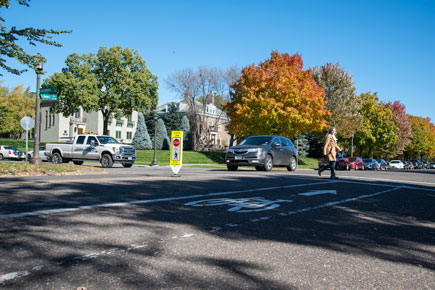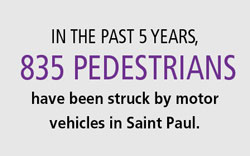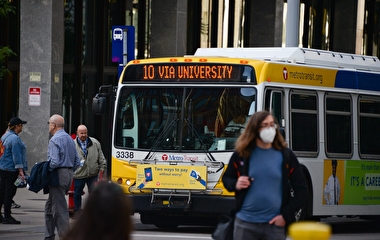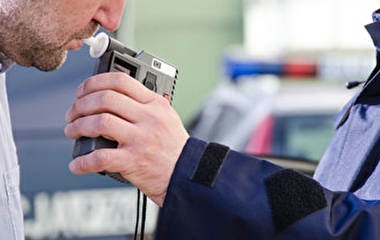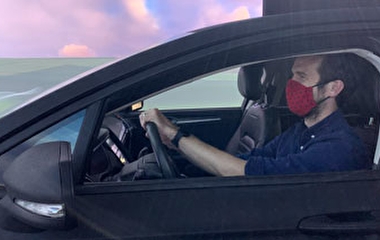Pedestrian-car crashes have been on the rise across the United States—a trend that has manifested in the Twin Cities. In the hopes of preventing crashes, researchers from the University of Minnesota have been collaborating with city and state officials on a project aimed at reminding drivers to watch out for pedestrians.
“The main premise of the study is to measure and enhance the efficacy of high-visibility enforcement for driver compliance to the crosswalk law in Saint Paul,” says Nichole Morris, director of the U of M HumanFIRST Laboratory and principal investigator of the study.
Researchers began collecting data in September 2017 with the original intention of evaluating the effectiveness of the “Stop for Me” campaign, an existing education/outreach pedestrian safety program in Saint Paul. With the help of Roadway Safety Institute researcher Ron Van Houten, Morris decided to take the study to another level.
“Instead of just measuring whether the Stop for Me campaign was effective, we wanted to ask, ‘Is it effective and can we improve it?’” Morris says. With funding from the Minnesota Department of Transportation (MnDOT) and in conjunction with the City of Saint Paul, the HumanFIRST Lab began working on a multi-step study exploring the effects of increased education, high-visibility police enforcement, and low-cost engineering on driving behavior.
The project started with the distribution of educational flyers warning about what Morris calls “multiple-threat crashes,” in which one car will stop for a pedestrian at a crosswalk only to be passed by another car from behind. In May 2018, Saint Paul police began stationing themselves near eight crosswalks to catch and warn drivers who failed to stop for pedestrians. In June, they began giving out tickets; at the same time, HumanFIRST researchers put up “feedback signs” that displayed the weekly percentage of drivers who stopped for pedestrians. Data to inform the percentages were collected from the eight treatment sites twice a week. Researchers also monitored eight additional crosswalk sites that had not been treated.
“That helps show people that most people are stopping for pedestrians,” Morris says, “and also shows them that drivers are being monitored.”
“Just in general, the awareness of pedestrian safety in Saint Paul rose to a new level,” said Commander Jeremy Ellison from the Saint Paul Police Department, who worked with the HumanFIRST Lab on the project. “In general, not only does it increase compliance, it increases safety.”
In August and October, researchers added another layer by including signs—placed strategically to draw attention to the crosswalk—reminding drivers that it’s Minnesota law to stop for pedestrians in crosswalks. Data collection continued through the end of October, and findings so far have been positive. Since September 2017, the average compliance rate of drivers at the eight treated sites jumped from 32 to 77 percent. Results were less dramatic at the eight untreated sites, but compliance still rose to 55 percent.
Melissa Barnes, former state pedestrian and bicycle safety engineer at MnDOT (now the Metro District north area engineer) working with the U of M on the project, says that the data this study gathered on driver behavior will be highly useful in reducing pedestrian traffic fatalities.
“This project will provide a template for successful implementation of a multi-faceted program that will increase pedestrian safety within communities of many different sizes,” Barnes says. “I would encourage communities to consider using it if they have pedestrian safety concerns.”
Moving forward, U of M researchers need to further analyze the crossing data to determine the influence of various characteristics of each crosswalk, the sustainability of the results, and which of the countermeasures was most effective. A final report on the study, including the findings from this analysis, will be published next year.
Commander Ellison also said that the Saint Paul Police Department plans to continue collecting data and implementing countermeasures after the official study is done.
“This isn’t going to end when the research ends,” Ellison said. “It’s going to continue on.”
